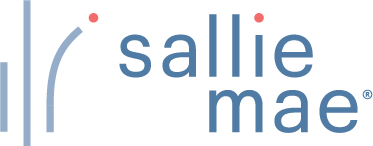The New Income-Driven Repayment Plan: How ‘SAVE’ Works

Many or all of the products featured here are from our partners who compensate us. This influences which products we write about and where and how the product appears on a page. However, this does not influence our evaluations. Our opinions are our own. Here is a list of our partners and here's how we make money.
In the wake of the Supreme Court's decision to block student debt cancellation at the end of June, the Education Department announced it had finalized its newest income-driven repayment plan and named it Saving on A Valuable Education (SAVE). It replaces REPAYE, a previous IDR plan that rolled out in 2015.
While Biden’s debt cancellation plan would have given a one-time boost to existing borrowers, this new IDR plan could help current and future college students for years to come. Borrowers can sign up for the new plan now, ahead of bills resuming in October.
SAVE's final rules illustrate the most generous undergraduate student loan repayment plan yet:
Borrowers earning less than about $32,800 individually, or less than $67,500 for a family of four, would see $0 monthly bills.
Most other borrowers would see their payments cut by at least half, with the most benefit going to those with undergraduate loans only.
Students who borrow less than $12,000 would see their remaining balances wiped away after 10 years of payments, instead of 20 to 25 years.
If you make your monthly payments, interest won't build up on your student loan balance.
The Education Department said parts of SAVE will be available this summer, ahead of student loan payments resuming. Interest started building again on student loan balances Sept. 1, and bills are due beginning in October. Your student loan servicer may take up to four weeks to process your income-driven repayment (IDR) application, so don't delay if you want to be on SAVE as soon as payments resume.

How the new student loan repayment plan differs for other IDRs
Repayment choices are simpler
The proposal reduces option overload for borrowers.
The government currently offers four different IDR plans, because past iterations were not retired when new ones rolled out. SAVE is replacing the widely used Revised Pay As You Earn plan, known as REPAYE. The department will also phase out or limit new enrollments in three other repayment plans.
More income is sheltered
Right now, the Education Department calculates IDR payments based on discretionary income — your household income minus 150% of the federal poverty guideline for your family size and location.
If your household income is $75,000 for a family of four in Virginia, your non-discretionary income is $45,000 and your discretionary income is $30,000, based on 2023 U.S. federal poverty guidelines. Payments under current IDR plans are a percentage of that $30,000.
The new plan places the threshold for discretionary income at 225% of the federal poverty guideline. That same $75,000 household would see payments based on just $7,500 of discretionary income.
Estimate your payments under the new IDR:
Required payment is cut in half
Current IDR plans require borrowers to pay at least 10% of their discretionary income each month. Under the new plan, income-driven repayment for undergraduate loans would be set at 5% of discretionary income.
This means, on top of the lowered repayment amount based on the change in discretionary income calculations, borrowers with undergraduate loans will pay much less.
For the family with $75,000 in household income, that’s the difference between a $250 monthly payment and a $31 payment.
Borrowers with only graduate school loans still would pay 10%. Borrowers with both undergraduate and graduate loans would pay a weighted average between 5% and 10%.
“A borrower who has $20,000 in loans from their undergraduate education and $60,000 in loans from their graduate study would pay 8.75% of their income,” explained the Education Department. “A borrower who has $30,000 in loans from each would pay 7.5%.”
Forgiveness comes sooner
Currently, borrowers are eligible for forgiveness of their remaining student loan balance after 20 or 25 years under current IDR plans, regardless of how much money they took out for school. However, the new plan would cut that down to 10 years for borrowers with principal loan balances of $12,000 or less. One additional year of repayment is required for each additional $1,000 borrowed above $12,000. So, for example, if you took out $14,000 to pay for college, you'd reach forgiveness in about 12 years.
With the new plan, the Education Department projects that 85% all community college borrowers will be debt-free within 10 years.
Unpaid interest is cancelled
Currently, REPAYE payments do not cover all of the interest on a loan each month. The government covers half of the unpaid interest and the rest mounts over time. This new rule applies to both subsidized and unsubsidized federal student loans.
Under the new SAVE plan, any interest unpaid each month would be covered by the government, so long as the borrower keeps up with their monthly payments. This leftover interest would not accrue.
An example from the Federal Student Aid office: "If $50 in interest accumulates each month and you have a $30 payment, the remaining $20 would not be charged."

on Summer
When is the new IDR plan available?
Parts of the plan will be available to borrowers before repayment resumes in October, but additional benefits won't be in place until July 2024, per the latest Department of Education guidance. Here's the new IDR rollout timeline:
SAVE benefits available summer 2023
More income is protected. Income exemption raised from 150% to 225% of the poverty line, which could significantly shrink monthly payments for borrowers.
Interest won't build. Unpaid interest won't accumulate if monthly payments are made.
Benefits for some married borrowers. Spousal income for borrowers who are married and file taxes separately will be excluded from IDR payment calculations; spouses no longer required to co-sign your IDR application.
SAVE benefits available by July 2024
Monthly bills halved. Payments on undergraduate loans will be cut in half, from 10% to 5% of income above 225% of the poverty line.
Loan forgiveness applied for smaller balances. Remaining loan balances forgiven for borrowers who took out $12,000 or less and have made payments for at least 10 years.
Consolidation penalty lifted. Borrowers who consolidate their federal loans will no longer lose progress toward IDR loan forgiveness.
Automatic credit toward IDR forgiveness. This will be applied to borrowers' accounts for certain periods of deferment and forbearance.
Make up for missed payments. Borrowers will be allowed to make additional “catch-up” payments to get credit for all other periods of deferment or forbearance that don't qualify for automatic credit.
Automatic enrollment for borrowers with default risk. Borrowers with payments at least 75 days late on other repayment plans will be automatically enrolled in an IDR plan if they previously agreed to give the Education Department access to their tax information.
Who can sign up for the new repayment plan?
Borrowers with federal student loans can sign up. Contact your student loan servicer and submit an IDR application, so you can be on the new plan when payments pick back up in October.
If you refinance your student loans with a private lender, you will not be eligible for the SAVE IDR plan.
People who earn the least stand to benefit the most. Borrowers with the lowest projected lifetime earnings would see total payments per dollar that are 83% less, while the highest earners would only see a 5% cut, the Education Department said in January. Across all borrowers, average lifetime payments would shrink by about 40% compared to existing IDR plans.
Borrowers already enrolled in the REPAYE plan will automatically be placed in the SAVE. The application to directly sign up for SAVE is also live, as of late August.
» MORE: How to submit an IDR application
Private student loans are not eligible for IDR or any other student debt forgiveness options from the government, like Public Service Loan Forgiveness.
Parents who took out parent PLUS loans to help their child pay for school also cannot sign up for the revised IDR plan. They are only eligible for the government’s income-contingent plan, under which they pay 20% of discretionary income for 25 years before the remaining amount is forgiven. Parent PLUS borrowers can also still take advantage of PSLF forgiveness under the recent IDR waiver if they qualify.
Other changes to income-driven repayment ahead
The Education Department is also unveiling changes to the general IDR plan process and application this summer. Highlights include:
Integration with IRS system. Your tax and family size information is automatically available if you grant access to the Education Department. No need to manually provide this information on your IDR application.
Automatic IDR recertification. You'll no longer need to manually recertify your income and family size each year if you agree to disclose your tax information from the IRS. You'll be notified of your new payment amount if your information changes.
No interest capitalization if you leave IDR. Unpaid interest on your loans will no longer be added to your principal when you leave any IDR plan, except for the Income-Based Repayment (IBR) Plan.
Redesigned IDR application. It'll take 10 minutes or less to complete, the Education Department says.
» See more financial news from NerdWallet
Private student loan refinancing options
Student loans from our partners

on Splash Financial
Splash Financial
5.0
NerdWallet rating
5.0
NerdWallet ratingon Splash Financial
on LendKey
LendKey
4.0
NerdWallet rating4.0
NerdWallet ratingon LendKey

on SoFi
SoFi
5.0
NerdWallet rating
5.0
NerdWallet ratingon SoFi





